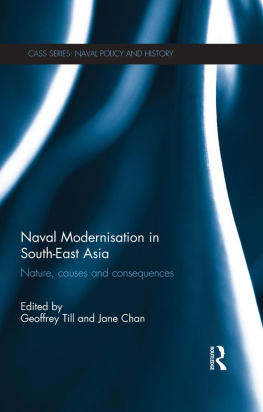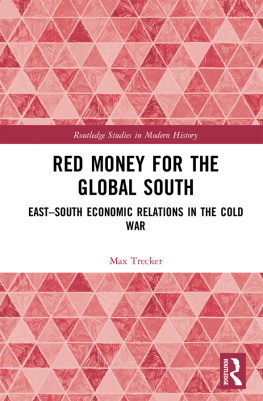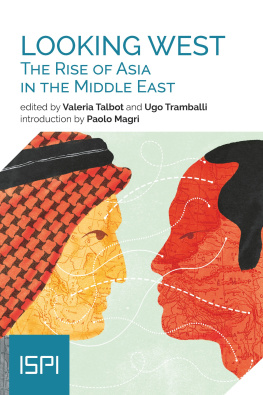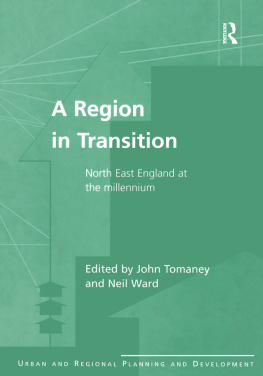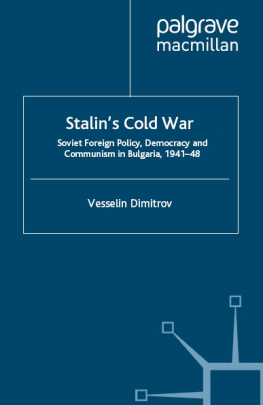ECONOMIC PERFORMANCE IN SOUTH- EAST EUROPEAN TRANSITION COUNTRIES
AFTER THE FALL OF COMMUNISM
TAHIR MAHMUTEFENDIC
Copyright 2014 by Tahir Mahmutefendic.
Library of Congress Control Number: 2013923718
ISBN: Hardcover 978-1-4931-3965-1
Softcover 978-1-4931-3966-8
Ebook 978-1-4931-3967-5
All rights reserved. No part of this book may be reproduced or transmitted in any form or by any means, electronic or mechanical, including photocopying, recording, or by any information storage and retrieval system, without permission in writing from the copyright owner.
Rev. date: 01/08/2013
To order additional copies of this book, contact:
Xlibris LLC
0-800-056-3182
www.xlibrispublishing.co.uk
Orders@xlibrispublishing.co.uk
522624
CONTENTS
Dedicated
To Ekbal and Moenes
I owe a debt of gratitude to the following individuals:
Dr Eric Beckett Weaver, Editor in Chief of the South Slav Journal
Nemanja Marcetic, Honorary President of the South Slav Journal and former editor in Chief of The South Slav Journal
Pat Taylor, former Deputy Editor in Chief of The South Slav Journal
Edward Alexander, translator from Bosnian/Croatian/Serbian to English
Miro Ivanovic, ICT manager at CISCO
Finally, I owe my gratitude to those to whom this book is dedicated
Table 1Economic Growth in the Balkan Countries in 2004
Table 2Foreign Direct Investment in the Balkan Countries in 2004
Table 3Unemployment Rates in the Balkan Countries in 2004
Table 4Inflation Rate Measured by Consumer Price Index
in the Balkan Countries in 2004
Table 5Balance of Payments in the Balkan Countries in 2004
Table 6External Debt in the Balkan Countries in 2004
Table 7Share of Trade in GDP, 2002 (%)
Table 8Percentage of exports and imports to other
SEE countries, 2002
Table 9Share of the EU in SEE exports and imports (% 2002)
Table 10Growth of the world output in 2007
Table 11Selected economic indicators 2009/2010
Table 12Growth and composition of credit and currency
composition of loans, by country, March 2009
Table 13Percentage of the population in South-East European
transition countries living in absolute poverty using international poverty standards
Table 14The economic situation is better today than in 1989
(Per cent of respondents)
Table 15Relative Levels of GDP per Capita
ADAggregate Demand
AVNOJ The Antifascist Council of National Liberation
BiHBosnia and Herzegovina
CConsumption
CDOCollateral Debt Obligation
CEBSCentral European and Baltic States
CEFTACentral European Free Trade Area
COMECONThe Council for Mutual Economic Assistance
CPIConsumer Price Index
CPFCroatian Privatization Fund
ECThe European Commission
EBRDThe European Bank for Reconstruction and Development
ECBThe European Central Bank
EFTAThe European Free Trade Area
EIBThe European Investment Bank
EUThe European Union
ERMExchange Rate Mechanism
FBIHFederation of Bosnia and Herzegovina
FDIForeign Direct Investment
FIForeign Investment
FTAFree Trade Agreement
FRYThe Federal Republic of Yugoslavia
FYR MacedoniaThe Former Yugoslav Republic of Macedonia
GGovernment Expenditure
GDPGross Domestic Product
IInvestment
ICTInformation and Communication Technologies
ILOThe International Labour Organization
IMFThe International Monetary Fund
IPOInitial Public Offerings
KMultiplier
MImports
MbMonetary Base
MCIMonetary Conditions Index
MPCMarginal Propensity to Consume
MsMoney Supply
NAFTAThe North American Free Trade Area
NASDAQNorth American Stocks, Dividends and Quarterly
NATOThe North Atlantic Treaty Organization
OECDThe Organization for Economic Co-operation
OPECThe Organization of Petroleum Exporting Countries
OPTOptimal Purchasing Technique
PTAPreferential Trade Agreement
RMonetary Reserve Ratio
RPIRetail Price Index
RSRepublika Srpska
SEESouth East Europe
SEEREMSouth East European regional Electricity Market
SWFSovereign Wealth Fund
T-BillsTreasury Bills
UKUnited Kingdom
USUnited States
USAUnited States of America
VATValue Added Tax
WTOWorld Trade Organization
XExports
South East Europe is another name for the Balkans. The Balkans is a Turkish word meaning a mountain covered in forest. The region comprises the former Yugoslavia, Romania, Bulgaria, Greece, Albania and the European part of Turkey. The Balkans is one of the three peninsulas in Southern Europe. Unlike the other two, the Iberian and the Apennine, which are religiously and culturally homogeneous, the Balkans have always been a crossroads of civilisations and a mosaic of different religions, cultures, nations and ethnicities. This has been the cause of bloody conflicts throughout history. In addition the Balkans have always been the poorest region in Europe, with the possible exception of the 1960s, during which a successful economic development placed Greece and Yugoslavia near the bottom of the list of developed countries.
The Balkans were deeply divided in the aftermath of the Second World War. The regions heterogeneity was four-fold. The countries of the Balkan Peninsula had different internal political system, external political links and associations, different economic systems and different patterns of economic links with the rest of the world.
1.Greece and Turkey were mainly capitalist countries and parliamentary democracies and with multi-party political systems, which were on two occasions interrupted by military dictatorships. The other four countries, namely Albania, Bulgaria, Romania and Yugoslavia were communist countries with one-party system.
2.From the point of view of external politics the Balkans were even more divided. Greece and Turkey were members of NATO. Romania and Bulgaria were members of the Warsaw Pact. Yugoslavia was a non-aligned country, whilst Albania did not belong to any pact or association of countries. It had intensive links with the Soviet Union until 1961 and, after this point with China.
3.Greece and Turkey were market economies with their governments playing a large role in their economies, Bulgaria and Romania were centrally planned economies. Yugoslavia was a semi-market economy, containing elements of both the systems.
4.Greece and Turkey were the members of OECD and had the most intensive economic links with capitalist countries. Romania and Bulgaria were the members of COMECON and had the most intensive economic relationships with the other communist countries. Yugoslavia was the most open communist country with intensive economic links to both East European and West European countries, especially the Soviet Union, West Germany and Italy. Albania was a closed country with a negligible level of economic relations with the rest of the world.
Political and economic fragmentation is at the same time one of the causes and consequence of backwardness. The collapse of communism was viewed by some as a golden opportunity to integrate the region and turn it into a prosperous part of Europe. The introduction of parliamentary democracy, multi-party systems and free elections politically unified the region. Transition from centrally planned economy and in the case of Yugoslavia from a semi-market economy to a market economy had, amongst others the aim of removing the differences in economic systems which existed between the regions countries. Various initiatives such as the Stabilisation and Association Pact and bilateral trade agreements were supposed to beef up the weak relations which existed between the regions countries. The possibility of European Union and the NATO membership was supposed to act as a carrot, the aim of which was to integrate the Balkans into the wider European economic and political frameworks through dynamic economic expansion.
Next page


